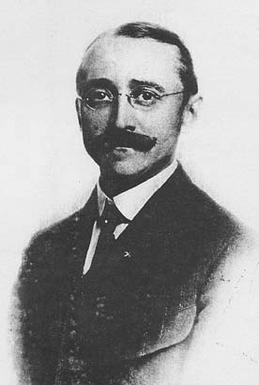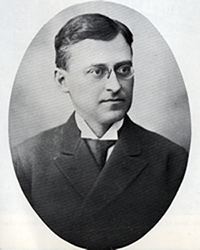If there’s one auto brand that you won’t see very often on the road anymore, it’s Packard. These cars were an American classic that for a time were so popular that they outsold Cadillacs. Packard was a Detroit-based automaker that was founded by James Ward Packard, brother William Packard, and a partner, George Lewis Weiss in 1899. Originally, the trio founded Packard in Warren, Ohio—and their first car was built there on November 6, 1899.

But later, Henry Bourne Joy, who belonged to a wealthy family in Detroit, bought Packard. Operations moved to Detroit, and from that point on, the company manufactured cars all the way through 1958, when the company’s South Bend, Indiana factory finally closed down.

Here in Ohio, if you happen to have an interest in antique cars or in Packard automobiles specifically, then you’re in luck! One of the world’s best automobile museums, America’s Packard Museum, is located in Dayton—and there are lots of interesting things to see here. Let’s take a virtual trip through some of what the museum has to offer, and we can all learn a little bit about Packard’s history along the way.
Facts About the Packard Museum
The museum itself has a lot of interesting history behind it. Robert Signom II, a long-time car collector, founded it in 1992. One of the coolest things about this museum is that it actually used to be a Packard dealership, one that was built in 1917. Back when cars were still being sold from the building and lot, it was called “The Citizens Motorcar Company.” In fact, the museum still runs under the official “The Citizens Motorcar Company” name, but it’s more popularly known as America’s Packard Museum.
Today, the museum houses the world’s largest collection of Packard cars and Packard memorabilia. It’s so large that Car Collector magazine named it among their top ten auto museums in the nation—and they’ve even won a James J. Bradley award, which is a prestigious award given to auto museums and historians. In this case, America’s Packard Museum won for their work in preserving historical motor vehicles and associated artifacts.
What You’ll Find at the Museum
There are lots of reasons to visit America’s Packard Museum. If you’re a car enthusiast, then you’ll love it simply for all cars and artifacts on display. And for some, it might even feature in family history. Packard was a major manufacturer of luxury automobiles that was founded in Ohio and had facilities in Michigan and Indiana. For many, that means their ancestors could have worked on Packard production lines or even at dealerships that sold these cars.
Whether it’s a trip back to your roots or a visit to see vintage cars, at America’s Packard Museum, you’ll find cars dating from 1903 to 1956. There are more than 50 cars all told, and the way the museum is set up, you’ll get to relive the old-fashioned dealership experience. Cars and other artifacts are displayed in a beautifully restored art deco showroom as well as the original service department and in a pavilion.
Packard Historical Background
Early in automobile history, Packard truly was a big name. They started building cars in 1899, and it wasn’t long before the company rose to prominence as a manufacturer of fine automobiles. This happened when the Gray Wolf came out in 1904. The Gray Wolf featured a four-cylinder engine, and it was designed to be a speedster. In fact, it was the first American-made race car to be made available to consumers—and that was in large part responsible for Packard’s rise to prominence.
Packard became the leading luxury car maker in 1916 when they came out with the Twin Six. The Twin Six was extraordinary, featuring a V-12 engine, which was a technological revolution at the time.
What’s most interesting is that the engine was so revolutionary that when World War I broke out and factories around the United States converted production to the war effort, Packard’s Twin Six was adapted to be used as the Liberty Aircraft engine. As such, Packard’s engine became the absolute most important war material produced by the United States during World War I.
So if Packard was once among the most prominent automakers in the United States, then what led to the halt in their production? Part of it was the development of a V-16 engine in the 1930s by General Motors. With this development, Cadillac rose to prominence as the foremost luxury car even above Packard. In response, Packard created a more affordable car, the One Twenty, which boosted their sales for a time.

However, World War II brought the American auto industry to a halt as car production converted to wartime efforts once more. The war itself left Packard in fantastic shape financially, with a gross worth near $33 million. But, issues started to drain those resources. When Packard started producing cars again in 1945, they termed these models 1946 models, but in reality, these cars only featured small updates from those developed in 1942, before production shut down.
Other automakers began to outpace Packard in design and production. More and more, Packard cars were seen as outdated and less fashionable than the futuristic designs that brands like Cadillac were producing.

In the 1950s, sales started drying up for Packard, and Studebaker, at the time a much larger automaker, ended up buying Packard. With the merger, Packard-Studebaker became the fourth largest automaker in the U.S.—but unfortunately, Studebaker had its own problems, which led to them discontinuing Packards and the larger Studebakers. In 1956, the Detroit Packard plant shut down, and the decline continued until 1958 when the company finally closed up completely.
Packards might not be on the road anymore, but they’re a vital part of American history. And that’s what makes America’s Packard Museum important. Here, you can delve into their history and learn all about the rise and fall of one of America’s most iconic automakers.







